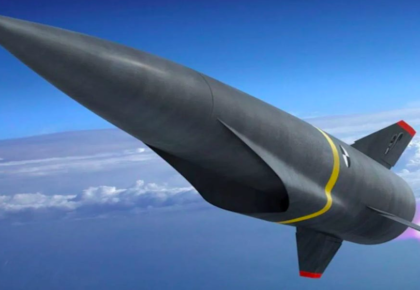
Soaring through the stratosphere, pushing the boundaries of human exploration – the aerospace and defence (A&D) sector is a marvel of innovation. Yet, amidst the awe-inspiring feats of engineering lurks a hidden enemy: the insidious threat of counterfeit parts and ever-evolving cyberattacks. These phantoms in the machine pose a grave risk, jeopardizing the safety of personnel, the integrity of critical infrastructure, and the success of missions that reach for the stars.
The Counterfeit Conundrum:
Imagine a fighter jet, a marvel of aerodynamics, plummeting not from pilot error but from a faulty sensor – a meticulously crafted counterfeit, indistinguishable to the naked eye. This chilling scenario underscores the peril of counterfeit parts. These imposters, lacking the rigorous testing and quality control of genuine components, infiltrate the A&D supply chain, introducing a ticking time bomb. A single faulty component can lead to equipment failure, compromising mission objectives and, more importantly, human lives.
Counterfeit parts expose vulnerabilities within the A&D supply chain. Malicious actors exploit weaknesses in procurement processes, documentation, or quality control measures to introduce these imposters. The consequences can be catastrophic – a compromised weapons system, a crippled communication network, or even the grounding of an entire fleet.
Combating the Counterfeit Threat:
Fortunately, the A&D sector isn’t flying blind. A multi-pronged approach can mitigate this risk. First, robust vendor management is critical. Think of it as vetting every potential supplier with the scrutiny of a seasoned intelligence analyst. This involves meticulously evaluating a vendor’s track record, manufacturing capabilities, and quality control procedures. Partnering with established players with a proven commitment to quality is paramount.
Second, advanced part authentication is the A&D equivalent of a high-tech passport check. Techniques like physical inspection, chemical analysis, and radio frequency identification (RFID) come into play. These methods verify the authenticity of parts based on unique markers or material properties, ensuring only the real deal makes it onto the flightline.
Emerging technologies like blockchain offer further promise. Imagine an immutable ledger that tracks a part’s origin and movement throughout the supply chain. This level of transparency makes it significantly more difficult for counterfeit parts to infiltrate the system. By leveraging these tools and fostering collaboration between governments, industry stakeholders, and international partners, the A&D sector can build a more resilient supply chain, one that prioritizes safety and mission success.
The Ever-Evolving Cyber Threat Landscape:
However, the battle lines extend beyond physical components. The A&D sector faces a formidable opponent in the digital realm – cyberattacks. With an ever-increasing reliance on interconnected systems and digital infrastructure, military hardware and infrastructure become prime targets for malicious actors. These digital phantoms can exploit vulnerabilities to gain unauthorized access, disrupt operations, steal sensitive data, or even manipulate critical systems.
The modus operandi of these cyber adversaries is diverse. Supply chain attacks, for instance, target upstream suppliers to introduce malware or vulnerabilities into components that then infiltrate the A&D ecosystem further down the line. Nation-states, too, may launch sophisticated attacks to sabotage operations, steal classified information, or gain a strategic advantage. The rise of the Internet of Things (IoT) throws another curveball. With an increasing number of sensors and communication devices integrated into A&D systems, new attack vectors emerge, making it even more crucial to fortify cyber defenses.
Building a Digital Fortress:
The A&D sector isn’t without its digital arsenal. Zero-trust architecture serves as the foundation of a robust cybersecurity posture. Think of it as a system that assumes everyone and everything is a potential threat, constantly verifying identities before granting access. Regular cybersecurity awareness training equips personnel to identify phishing emails, report suspicious activity, and become the first line of defense against cyber threats. Proactive measures like vulnerability management and data encryption are also crucial. Patching vulnerabilities promptly minimizes the attack surface, and encryption safeguards sensitive information, rendering it useless even if stolen.
Just like with combating counterfeit parts, information sharing is a vital weapon against cyberattacks. Collaboration between A&D companies, government agencies, and international partners allows for the sharing of threat intelligence. By working together and staying informed about the latest cyber threats, the A&D sector can build a more resilient digital infrastructure, safeguarding critical systems and ensuring the integrity of its operations.
A Collaborative Future for A&D:
The fight against counterfeit parts and cyber threats in the A&D sector demands a holistic approach. Governments can play a crucial role by enacting stricter regulations on components used in aerospace and defence applications, fostering international cooperation on information sharing. Industry associations can develop and enforce stringent standards for A&D practices, while continuous investment in advanced technologies like AI and machine learning can enhance counterfeit detection and cyber warfare defense. Perhaps most importantly, a skilled and cyber-aware workforce is paramount. Investing in training programs that equip personnel with the knowledge to identify and respond to cyber threats is essential. By building a culture of cyber hygiene and empowering its workforce, the A&D sector can ensure it remains a launchpad for innovation, not a landing strip for vulnerabilities.
Safeguarding the Skies and Beyond
The A&D sector, with its cutting-edge technology and intrepid spirit, is humanity’s bridge to the cosmos. However, the invisible threats of counterfeit parts and cyberattacks loom large. By prioritizing robust supply chain management, implementing advanced cybersecurity measures, fostering a culture of cyber awareness, and harnessing the power of collaboration, the A&D sector can secure its future. Only then can it continue to propel us forward, towards a future where innovation soars unhindered and the skies remain a canvas for humanity’s dreams.
Global Business Opportunities in Parts and Cybersecurity for Aerospace & Defence
The aerospace and defence (A&D) sector presents substantial business opportunities for companies specializing in parts and cybersecurity. Here’s a breakdown of the market size and potential areas for growth:
Market Size:
- Estimated Value: The global market for A&D parts is estimated to reach USD 540.4 billion by 2027, with a Compound Annual Growth Rate (CAGR) of 3.4%.
- Cybersecurity Segment Growth: The cybersecurity segment within the A&D market is expected to witness even faster growth, with a projected CAGR of 9.4%, reaching a market size of USD 298.5 billion by 2028.
Growth Drivers:
- Rising Military Expenditure: Increased global tensions and geopolitical instability are prompting many countries to increase their military spending. This translates to a growing demand for A&D parts and advanced weaponry.
- Technological Advancements: The A&D sector is constantly evolving with advancements in areas like artificial intelligence, robotics, and autonomous systems. This creates demand for specialized parts and cybersecurity solutions to ensure the integrity and safety of these new technologies.
- Aging Aircraft Fleet: Many countries have aging aircraft fleets that require ongoing maintenance and part replacements. This presents opportunities for companies specializing in replacement parts and MRO (Maintenance, Repair, and Overhaul) services.
- Increased Focus on Cybersecurity: As A&D systems become more interconnected and reliant on digital technologies, the need for robust cybersecurity solutions becomes even more critical.
Areas of Opportunity:
- Advanced Manufacturing Techniques: Companies specializing in 3D printing, additive manufacturing, and lightweight composite materials have the potential to gain a significant market share as the A&D sector seeks ways to improve efficiency and performance.
- Counterfeit Parts Detection: With the growing threat of counterfeit parts infiltrating the supply chain, companies offering advanced part authentication and traceability solutions are in high demand.
- Cybersecurity for Emerging Technologies: As AI and autonomous systems become more prevalent in A&D applications, companies offering specialized cybersecurity solutions to protect these systems from cyberattacks will be well-positioned for growth.
- Data Security and Encryption: With the increasing reliance on digital data for A&D operations, companies providing data security and encryption solutions can capture a significant market share.
- Supply Chain Management: As the A&D industry strives to mitigate counterfeit parts and ensure the integrity of its supply chain, companies offering robust supply chain management solutions will be in high demand.
Regional Variations:
- North America and Europe: These regions are expected to remain the dominant markets due to their established A&D industries and high levels of military spending.
- Asia Pacific: This region is experiencing rapid growth in its A&D sector, driven by rising military budgets and increasing technological advancements. This presents significant business opportunities for parts and cybersecurity companies.
Challenges and Considerations:
- Strict Regulatory Environment: The A&D sector is heavily regulated, with stringent quality and safety standards for parts and cybersecurity solutions. Companies need to be prepared to navigate this complex regulatory landscape.
- Long Sales Cycles: A&D procurement processes can be lengthy and complex, requiring companies to demonstrate expertise and build strong relationships with potential clients.
- Competition: The A&D parts and cybersecurity market is highly competitive, with established players and emerging companies vying for market share.
The A&D sector offers substantial business opportunities for companies specializing in parts and cybersecurity. By understanding the market drivers, growth areas, regional variations, and challenges, companies can position themselves to capture a share of this lucrative market. Continued innovation, robust cybersecurity solutions, and a commitment to quality will be key factors for success in this dynamic and ever-evolving industry.








